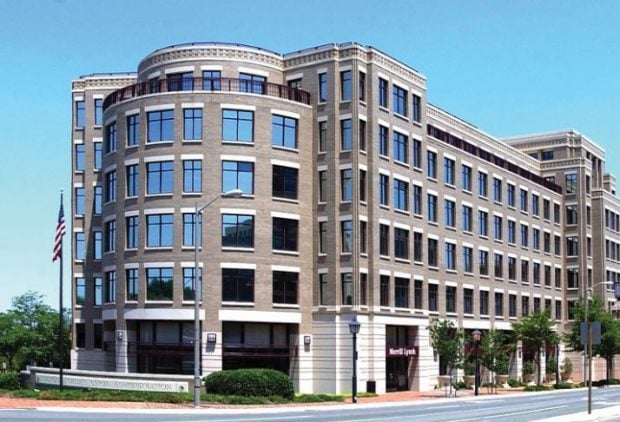No one thing gives credit unions an image. The way members are treated. The professionalism of the staff and the facilities. A credit union's support of charitable causes. The look and feel of marketing pieces. All these and many more factors contribute to the overall image of credit unions. What all these examples have in common is that credit unions can do something about them. Dishshelved employees can be cleaned up. Rudeness to members can be dealt with as well. So can tacky and messy lobbies. Unprofessional looking print materials can be upgraded. But there are many things over which credit unions have little if any control that directly impact their image. A recent accusation against credit unions by a major player representing payday lenders (which he prefers to refer to as “low denomination, short-term loans”) is a case in point. What Billy Webster, CEO of Advance America (the country's largest cash advance company) basically said is that we (payday lenders) are tired of being painted as the bad guys when there are many others making a lot of money doing exactly what we do. Adding weight to his comments is the fact that Webster is also the immediate past president of the payday lenders' trade group, the Community Financial Services Association. (What an impressive name; talk about image.) Webster made it clear that his reference to “many others” definitely included credit unions. He put it this way: “We want to point out to regulators, policymakers, legislators, and the public at large that we are not the only institutions making these loans and that those other firms (credit unions) have found this market profitable.” From this statement alone it is clear that Webster believes there is little if any difference between the traditional small loans credit unions make and the cash advance scheme his group perpetuates. Putting his money where his mouth is, Webster indicated that his trade group has launched a campaign to advance his argument. So what we have here is one group with a very tarnished image trying to clean it up by potentially damaging the image of credit unions. They seem to be saying in effect, what we do can't be all that bad if those good guys at credit unions are doing the same thing. Never mind that credit unions, in fact, are not doing what the payday lenders are notorious for doing. Credit unions do not charge interest rates off this planet and do not encourage members to borrow well beyond their means. That's one of the problems with images. Facts sometimes matter less than perceptions (witness the current presidential campaigns). If the payday folks can make enough noise about what they do being no different than what credit unions do, the credit union image will suffer in the process. Sadly, it is easier to do then one might think. Often images are improved or damaged on mere sound bites. Like this one: “I just object to credit unions trying to throw my members under the bus while they get involved in the same work.” Another obvious example of the good image of credit unions taking it on the chin involves the on-going battle between the “Friends of Columbia Credit Union” and the “Save Our Credit Union” forces. Much has already been written about this incendiary situation that evolved out of the sitting board's decision to switch to a bank charter. Forget who's right or wrong. Suffice it here to say that the constant heated verbal warfare, multiple lawsuits laced with charges and countercharges, strongly worded informational campaigns, implied and actual threats, and face-to-face confrontations, hardly contributes to the good image of credit unions in the state of Washington. Or across the country. Then there is that debate between a credit union versus a banking industry representative, which took place at the CUNA GAC. Much has also subsequently been written about it. I would only add for this discussion that that session did nothing to put a shine on the credit union image. Quite the opposite. And CUNA, as the entity responsible for the debate's participants and format, surely had an obligation to make a for-the-record statement for the good of the credit union image ASAP after the session. Didn't they? Of course image is a two-way street. On the positive side is the solid support of the long-standing credit union tax-exemption by the Bush Administration. That development drove the banking industry nuts. So think how the bankers must have felt when they learned within the last two weeks that Democrat presidential candidate John Kerry has now expressed that same credit union support in writing. What a great boost to the image of credit unions. Incidentally, neither Bush nor Kerry woke up one fine day and decided to support credit unions. These things happen because connected individuals at credit union trade groups make them happen. There are hundreds of examples of how credit unions have contributed to a positive credit union image. Putting that in perspective, many years ago, a public relations professional by the name of Denny Griswold defined PR in very simple terms: “Doing good and then telling everyone about it.” In simplest terms, the credit union image depends on three things: first, telling everyone about all the good things credit unions are doing for members and the communities where they live and work; second, not doing anything that tarnishes the CU image; and third, defending that image whenever necessary. Comments? Call 1-800-345-9936, Ext. 15, or Fax 561-683-8514, or E-mail [email protected].
© Touchpoint Markets, All Rights Reserved. Request academic re-use from www.copyright.com. All other uses, submit a request to [email protected]. For more inforrmation visit Asset & Logo Licensing.






